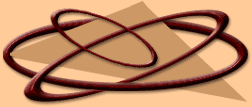|
The Jakelj magnet motor is a universal motor with numerous, practically unlimited applications. It can easily be installed
in an automobile body, usually directly above the drive wheels. It requires no transmission! and no brakes! the stopping
torque is 3 times greater than the drive torque. It has tremendous acceleration and consumes much less electrical energy
than conventional electric motors so it can operate with a smaller battery package for much longer periods. It could be mounted
on the propeller shaft of a ship, helicopter, or airplane. It could drive rail cars of all kinds and even replace locomotives
by installing one or more such motors on each car. It has a nearly unlimited service life because it has so few moving parts.
It can function more efficiently wherever electric, gasoline or diesel engines operate now -- with much lower costs, almost
zero maintenance and much more instantly available power.
In a performance test a pulley was affixed to the rotor
shaft and a rope attached to it in such a way as to be wound/wrapped around the pully when the motor turned. The pulley on
the shaft had a diameter of 500 mm (0.5 m). The rope was then led to a height of 12 meters and through a pulley down to the
ground level and attached to a drum containing 200 liters of water (= approximately 440 lb). The motor raised and lowered
the weight without difficulty at various rpm and could stop and hold it in any position. To test the braking torque, the
same weight was allowed to free fall (motor switched off) from the height of 12 meters. Just before it hit the ground (about
1 meter above ground) the motor was switched on in the "stop" position. The motor caught and held the weight instantly,
without slip.
Below is a comparison of the technical characteristics of the standard DC motor and the Jakelj Magnetic
Motor
|
 |
|
THE DC MOTOR
- has commutator and brushes
- has a rotor winding
- stator
has a commutator winding and coils
- stator compensation winding (cross field compensation)
- has starter with resistors
- barrier resistors to regulate rpm
- shunts for exciter field attenuation
- windings have 'heads' ; 50% of the copper is inactive
- in the event of an interturn short the entire coil must be destroyed
with heavy losses and production delays
- insulation and coils
are installed manually, the heads wrapped and steel cover installed;
winding soldered to commutator segments
- the winding turns cross in
the heads, resulting in high interturn voltages
|
|
 |
|
THE JAKELJ MAGNETIC MOTOR
- has no commutator and no brushes
- no rotor winding
- stator has no commutator
winding and
no commutator coils
- no compensation winding
(no cross field)
- the motor has no starter and
no resistors
- no barrier resistors
- no shunts, no exciter field
attenuation
- no 'head' so no inactive copper
- in the event of an interturn short
the individual coils can be replaced;
all are individually accessible
- entire winding manufactured from concentric coils.
The coils are wound in advance onto the coil body,
coated with an insulating lacquer and dried.
No manual work.
- The winding has no 'heads'
Who was Franc Jakelj?
|
 |
 |
 |
|
|
|
